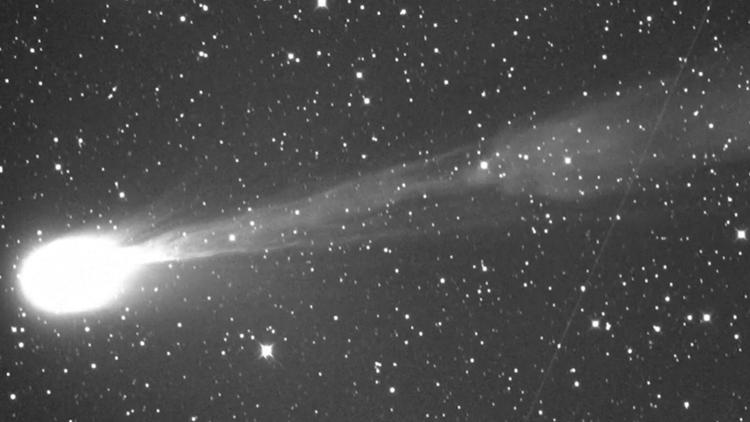WASHINGTON — A bright "horned" comet last seen 70 years ago could be visible to the naked eye at the end of this month.
12P/Pons-Brooks, often referred to as the "Devil Comet" for its hornlike appearance, has been making its way into the inner solar system and is already visible with a telescope, according to NASA.
The comet is expected to become bright enough to see without binoculars or telescopes near the end of March or beginning of April — just in time for the total solar eclipse.
The distinctive horseshoe shape has welcomed plenty of nicknames for 12P/Pons-Brooks. Among the resemblances noted are the Millennium Falcon from Star Wars, Yosemite Sam from Looney Tunes and the devil's horns, according to Space.com.
The 'Devil Comet' is described as a Halley-type comet, one that comes around once or twice in one's lifetime, and has a 71-year orbit, according to NASA. The last time it was seen in the inner solar system was in 1954 and it won't be seen again until 2095.
12P/Pons-Brooks is known for its outbursts in which it suddenly brightens due to bursts of gas and dust released from under its surface, the space agency explains. Comets, such as this one, are known to be unpredictable so it's hard to tell just how bright the horseshoe-like comet will be as it travels across our skies in the coming weeks.
For those staking out the comet in late March, NASA says it could be found in the west-northwest part of the sky at the end of evening twilight.
Comets are named for the astronomers who discovered them. Jean-Louis Pons first discovered 12P/Pons-Brooks on July 12, 1812, and then it was independently rediscovered by William Robert Brooks in 1883.
WCNC contributed to this report.



